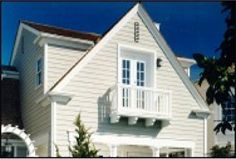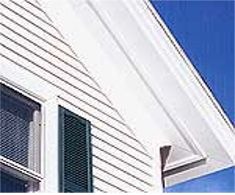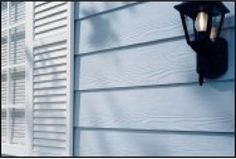
Although fiber cement siding commonly has the look of wood siding, it can be manufactured in a variety of profiles. In all cases, it is a cost effective and low maintenance finish that is resistant to termites and fire, will not rot, buckle or warp, and holds paint for several years longer than conventional wood siding.
Handling
Fiber cement trim pieces are straighter than wood siding, so less time has to be spent bowing the trim in alignment. Fiber cement siding is much heavier than wood siding, but it is flexible, so carrying it on its edge rather than flat is recommended. And proper precautions should be taken when cutting fiber cement siding.
Fastening
To prevent damage to the siding, avoid overdriving the fasteners. While coil nailers are faster, the drivers in the guns can be worn out faster. Setting the nail head below the surface decreases holding power. Also, corrosion-resistant roundhead nails are required. All fasteners should be driven into framing members. Most kinds of lap siding are bound at the top and bottom. When installing fiber cement siding over foam insulation board, as on an Insulating Concrete Form (ICF) house, exercise caution to ensure proper installation.

Detailing
Fiber cement trim board is available in varying sizes, from 7/16 inch to one inch. Vinyl corner trims are also compatible with fiber cement siding. Manufacturers recommend joining fiber-cement lap siding over a stud. Make sure to leave a 1/8 inch gap between the siding and the edge of the wood casings and corner boards so the wood can move. There is no need to paint or seal end cuts.
Painting
 Fiber cement siding holds paint exceptionally well, usually seven to 15 years. Some manufacturers offer siding as either pre-primed or raw (unpainted). If raw, siding should be thoroughly washed and allowed adequate time to dry before painting.
Fiber cement siding holds paint exceptionally well, usually seven to 15 years. Some manufacturers offer siding as either pre-primed or raw (unpainted). If raw, siding should be thoroughly washed and allowed adequate time to dry before painting.
Dirt and mildew are liable to stick to flat paint. Satin topcoats have a higher chance of looking blotchy than flat ones, so make sure to do a good job on your priming. While oil-based primers are not recommended, oil-based topcoats are acceptable over latex primers. Siding should be painted within 90 days of installation. Always make sure to follow the manufacturer's specs.